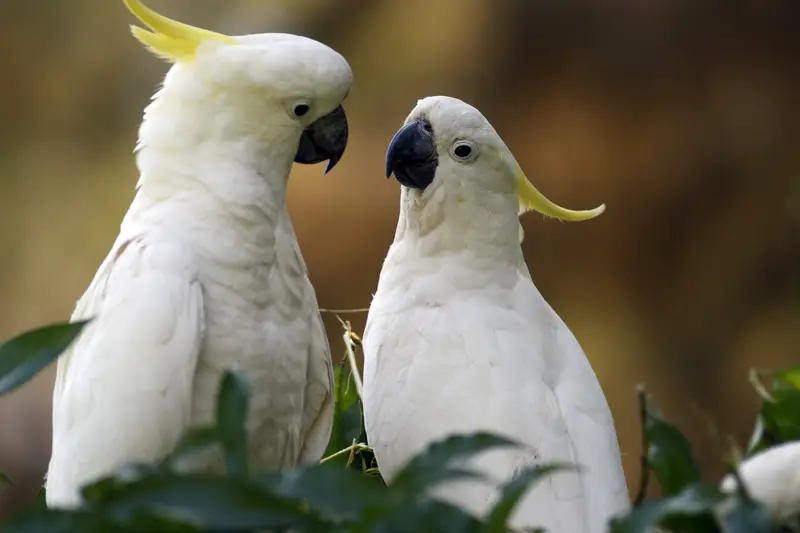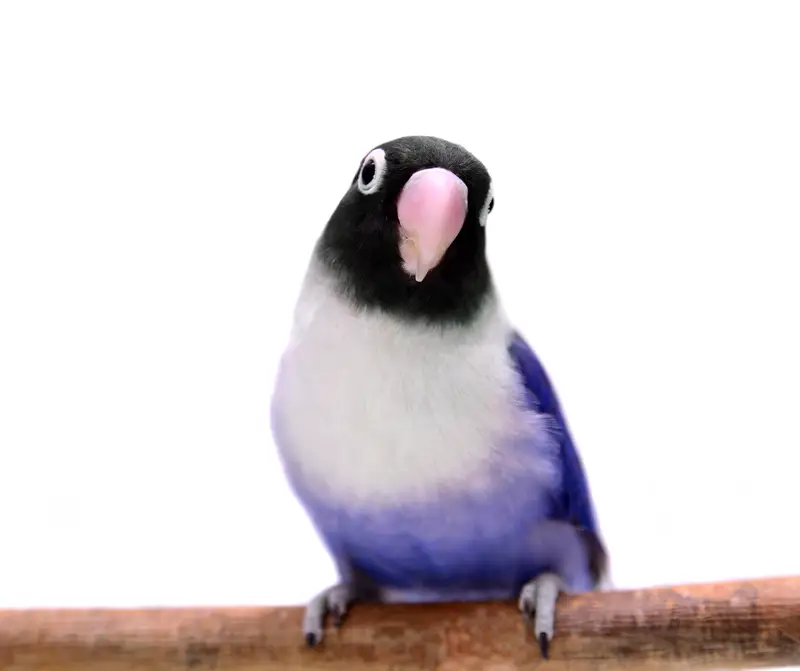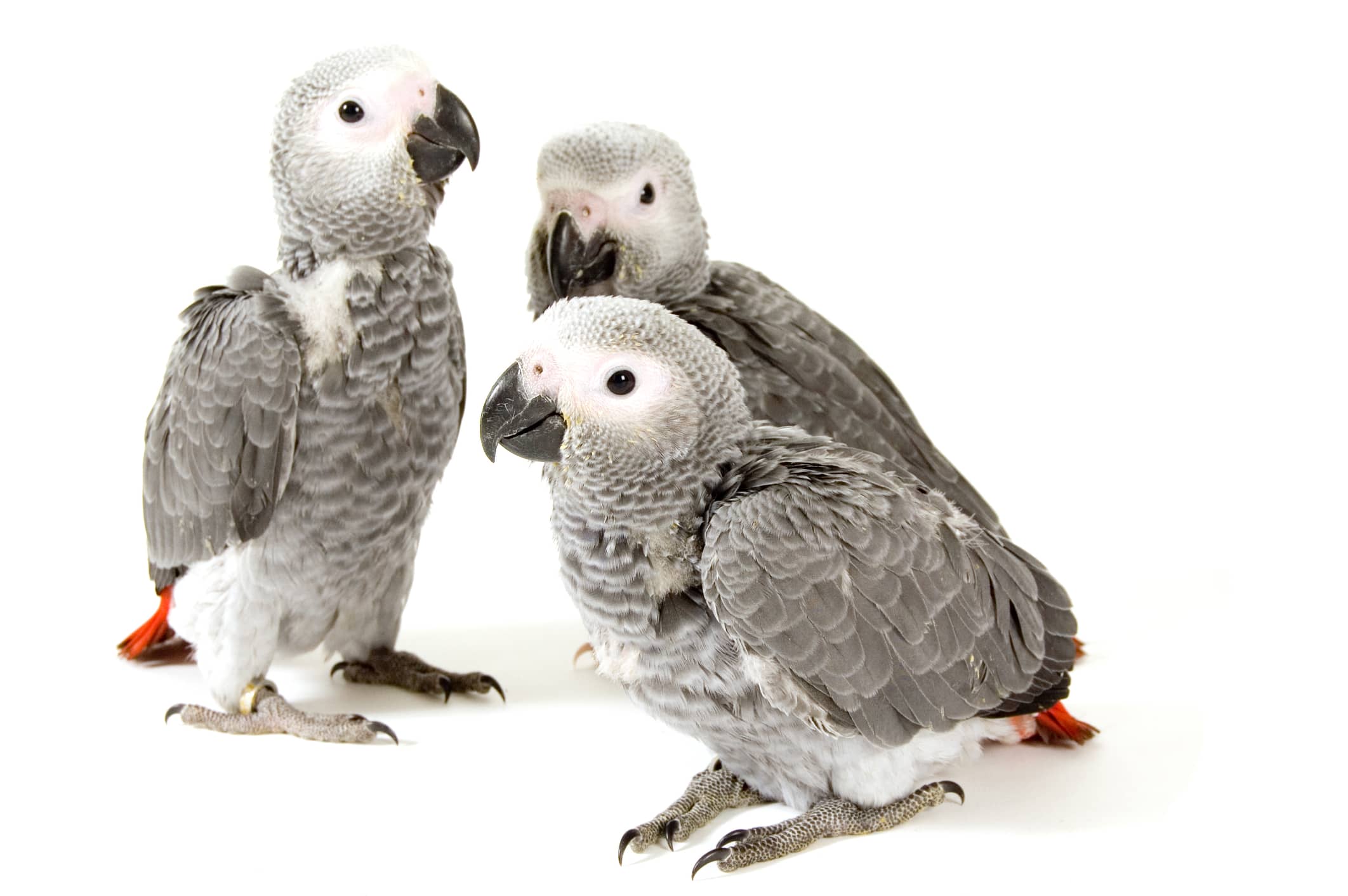Meet the Playful Caique Parrot: Everything You Need To Know
- VIParrot
- April 12, 2023
- 11:59 pm

Species Overview
Also Known As: Black-headed Caique, White-bellied Caique, Seven-color parrot, Dancing parrot, Yellow-thighed caique
Scientific Name: black-headed (pionites melanocephala), white-bellied (pionites leucogaster).
Adult Size: 10 inches
Life Expectancy: 25-30 years
Is The Caique Parrot a good pet?
- Playful
- Intelligent
- Loyal and affectionate, likely to bond with their owner.
- Lots of energy
- Whistling, singing, and playful noises and chirps.
- Fun to watch.
- Outgoing
- Excellent for owners looking for a companion animal that wants lots of attention.
- Nipping with a powerful bite
- Not good in cages with other birds
- Frequently making noises, chirps, and other sounds. It can be loud.
- Mood swings from time to time
Caique parrots are some of the most popular companion birds because they are a dense little package of pure fun and mischief. With beautiful plumage, a small size, and cute vocalizations, they have abundant personalities that could make the perfect addition to your home.
General Information
A caique parrot is a small bird, roughly 10 inches long, with short tails. The most prominent colors on this bird are vibrant greens, yellows, and oranges, with a black head attributed to one species of the caique. Another variety is named white-bellied for the white coating on its chest and front. There are several species of caique, with the white-bellied and black-headed being the most popular pets. A small but stocky bird known for its curious and fun-loving nature, the caique is widely known as an excellent pet.
The caique comes from South America and can be found in the Amazon rainforest. As this is their natural habitat, efforts to preserve the Amazon are crucial to the survival of the caique. Although the black-headed caique isn’t listed as a species of concern, subspecies like the white-bellied caique are currently marked as endangered on the IUCN Red List.
Caique parrots are little darlings of the companion bird world, which is nothing new. They’ve been extremely popular since they were first discovered at the turn of the 20th century. They were very popular as pets and continue to be to this day.
The caique parrot has many names, although “the clown of companion pets” is an all-time favorite. There are only two species, the white-bellied and black-headed caiques. Other terms used include:
- Black-headed caique
- White-bellied caique
- Seven-color parrot
- Dancing parrot
- Yellow-thighed caique
Scientifically, the black-headed caique is referred to as pionites melanocephala, whereas the white-bellied caique is called pionites leucogaster. With names like those, it’s no wonder they just call them by their beautiful bright plumage.
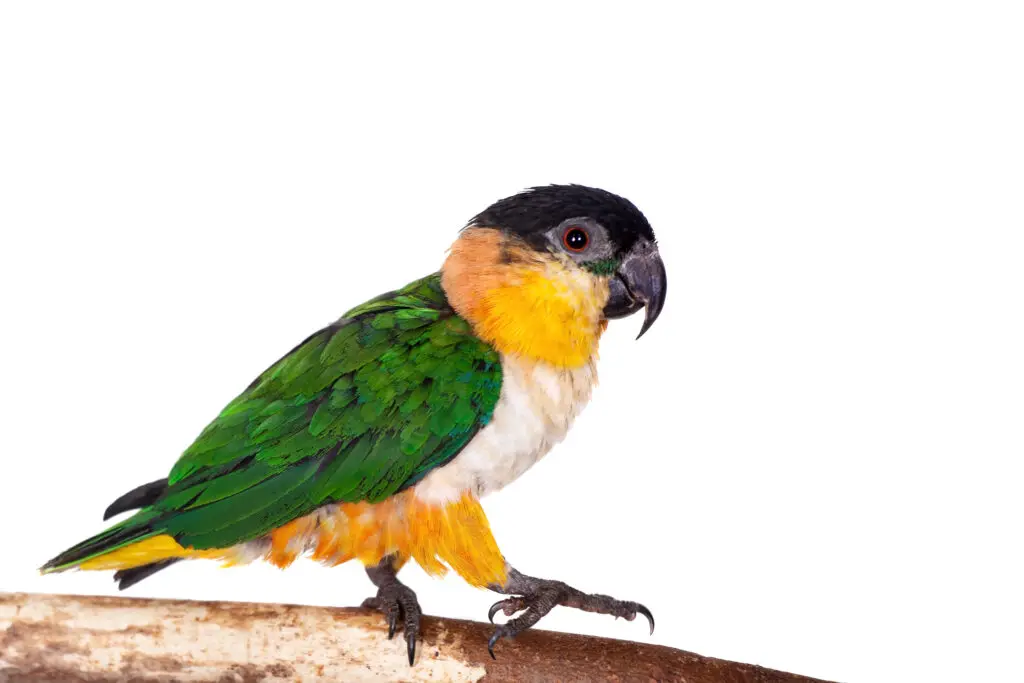
What does the name 'Caique' mean anyway?
While discussing this bird, knowing how to say its name is important. You might be tempted to say “cake,” but it’s not your birthday, so don’t say that. Instead, the proper way to pronounce the name caique is “kai-eke,” giving them the proper flavor and majesty of their roots.
A fun part of these birds is the meaning of their name. Caique comes from the indigenous Tupi language in Brazil. It refers to the bird’s love of bathing and means “aquatic bird.”
Life Expectancy
Like most parrots, the caique has a decent lifespan. Expected to live anywhere from 25 to 50 years, these bright, colorful playmates make great lifetime friends.
How big is the Caique Parrot?
As a medium-sized bird, caiques are expected to only reach about 10 inches in adulthood. As a result, they’re often called stocky or thick because they’re surprisingly dense for their relatively small size.

Breeding in Captivity
Caiques will breed in captivity, although it can be challenging. The pair needs to be harmonious and bonded ahead of time. Giving them a nest box with soft bedding in the bottom in a dark and secluded area (who doesn’t like alone time) can encourage breeding.
When it does happen, the female will lay 2 to 4 eggs and brood for roughly 27 days, during which the male will feed her and visit throughout the day and night.
Level of Care
The Caique can be high maintenance. Caique birds need a lot of human interaction to stay tame. They are independent and playful birds that can entertain themselves with toys but would much prefer a loving human to give them attention. They’re chatty extroverts who must hang out lots to keep themselves sane. The best way to care for your caique is to give it plenty of love and affection. Also, ensure they get the proper diet in the right amounts so they don’t get overweight and get plenty of exercise to offset the amount of food they’re eating.
How Caique Parrots show affection
Caiques are the kings of the body roll. To show affection, you’ll often see them body surf, rubbing and rolling in your hand to show how much they love you.
Vocalizations
Caiques aren’t known for being wordsmiths, but they are definitely vocal. Known as chatty and energetic, they’ll whistle and sing, even doing impressions of the environmental noises around them. Usually, they’re not known as loud, so much as constantly making a low-to-moderate level of noise, but they do occasionally let out a piercing or high-pitched noise or two. These are not quiet birds by any means, although they also aren’t the loudest parrot you can find.
Temperament
Love, affection, and bonding are integral parts of the caique parrot’s personality. They’re known for forming close connections with owners and being happiest in their presence. They’re also known as jokesters, energetic little best friends who love to learn and show off new tricks. After all, they are called the dancing parrot and show off as often as they can. Curious, lovable, mischievous, and always on the move, caiques are famously playful and a perfect companion for those looking for a little more comedy in their lives.
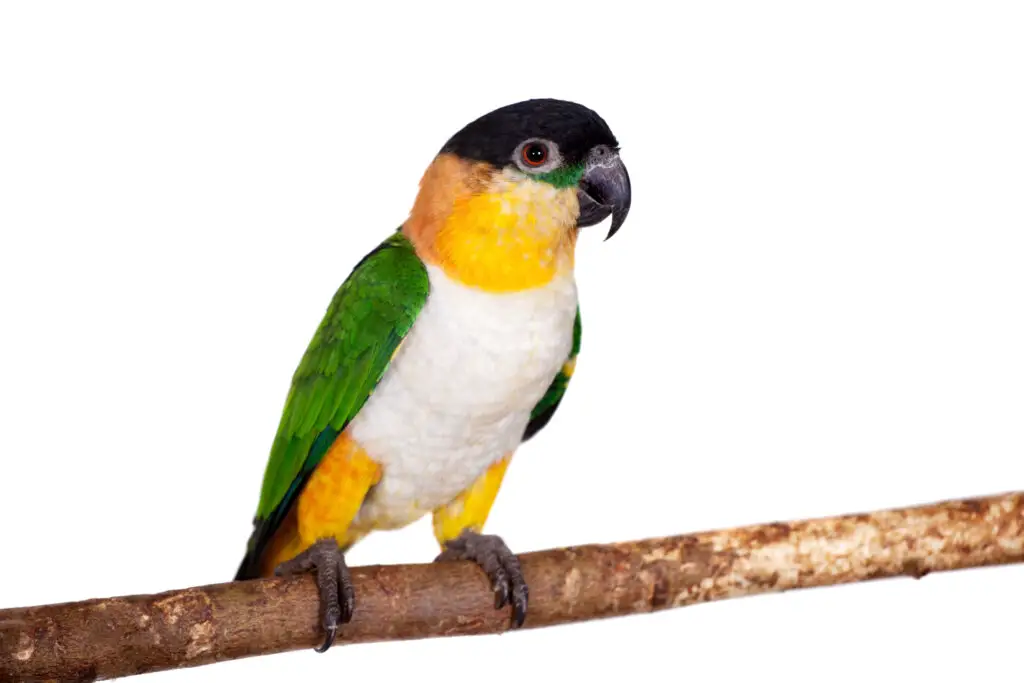
What food do they eat?
Caique parrots in the wild eat a mix of berries, seeds, and fruit. Always make sure food is fresh, and if there’s leftover food, you get rid of it at the end of the day. They need a high-protein diet with lots of nutrition. Feeding ideas include:
- Fruits
- Vegetables
- Leafy greens like Swiss chard, watercress, kale, or collard greens
- Nuts
- Beans
- Seeds from time to time (avoid an all-seed diet because it doesn’t get them all their vitamin and mineral needs)
- Chia seeds
Training
Caique parrots are full of life, and sometimes this exuberance for life can manifest as discipline problems. Demanding attention, throwing tantrums, and nipping hard in excitement are all things caiques will do. Proper training from an early age will keep these little quirks from becoming part of their personality. Training is critical for caiques, ensuring they act the way that will keep everyone happy.
Common Diseases and Ailments
With caique parrots, the most common ailments have to do with their skin and feathers. Diseased feathers may result in featherless patches on the caique’s backs. They can also become ragged or thin because of a lack of materials and oils in the feathers. These materials and oils are critical to the health of feathers and birds, so ensuring they get the correct diet is crucial.
Egg binding is another common problem for caique birds. If the birds aren’t producing enough calcium and vitamin D, their eggs can become soft and stuck within the females. A sign this is happening is if the females are laying multiple eggs over a period of a few days.
Caique parrots are one bird species susceptible to osteoporosis. This disease can be managed with proper diet and exercise. Without this, the caiques leg bones can become brittle and easy to fracture.
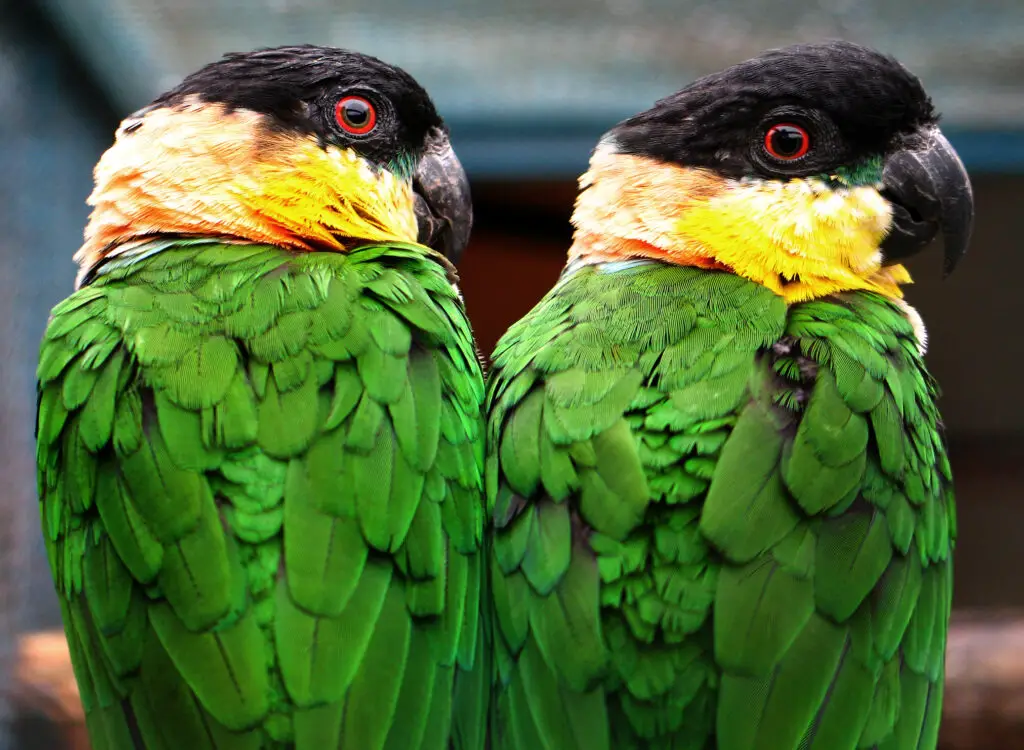
Exercise and Enrichment
Caiques are excellent parrots for their energetic and fun nature, so making sure there are lots of opportunities for them to have fun is highly important. You can do this by making sure they have lots of room in their cage. On top of this, caique parrots love to walk, so giving them time to hop and skip across the floor outside their cage makes for a fun way to provide them with more exercise and let them explore. It’s recommended that they get at least an hour outside their cage every day.
Because caiques have so much energy, toys are a must. So play around with the different toys each individual bird likes the most, such as swings and gnawing toys that also help keep their beak in good shape.
Cage Size
Caique parrots are a small to medium species of bird that need a much larger cage than you would expect. They need a cage that is at least 2 feet long, 2 feet wide, and 3 feet tall (with a spacing between the bars no more than ¾ inch). The intelligence and personality of these birds make them little Houdinis, so a sturdy cage that’s escape-proof is important. A wrought-iron cage is recommended since they like to gnaw on the bars.
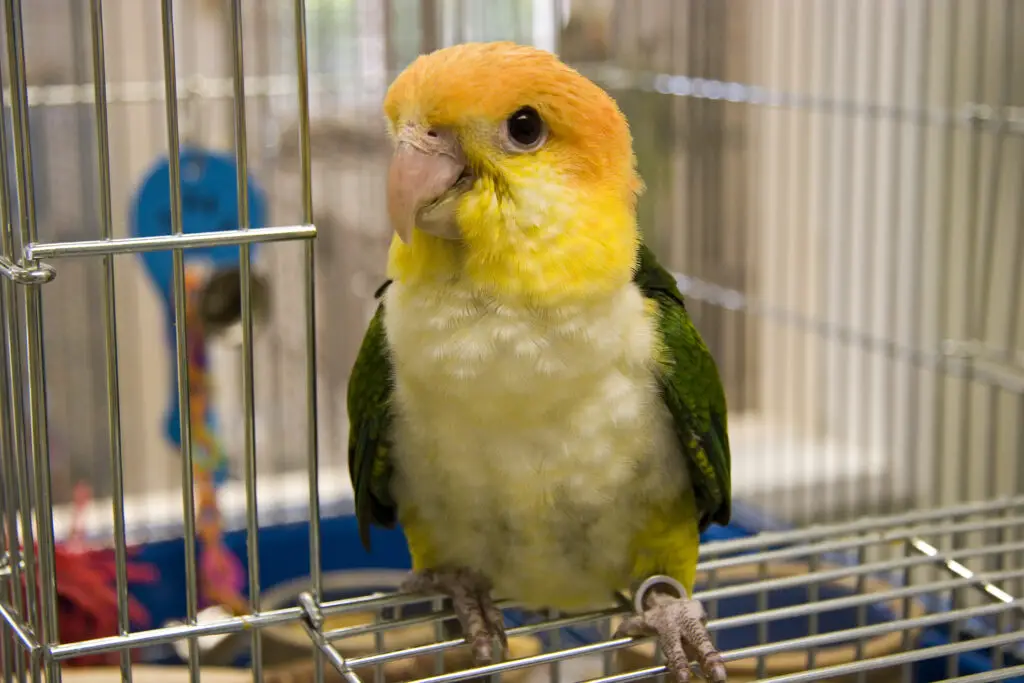
What Other Pet Birds Can a Caique Parrot Share a Cage With?
Caiques usually do well alone or in a pair with another caique as long as they get the right attention. However, caique parrots don’t do well with other birds, often becoming aggressive and biting hard. Caiques are well-known for bird-on-bird aggression, so they shouldn’t be kept in the same cage and should be watched carefully if other birds are in the house.
Where to buy a Caique Parrot
Price
Caique parrots bought from breeders range from $1000 to $2000. Adoption fees vary from center to center, with some quoting low around the $100 mark and others charging $400 and up.
Caique parrots are beautiful birds, and their exotic status can elevate their price as a result. The intelligence and cuteness of the caique parrot come into play with their price because they’re highly sought-after birds for their loving nature and rare status. Although both white-bellied and black-headed caiques can be bred in captivity, it’s not very easy to do, and this also affects the price. Also to be considered is that white-bellied caiques are listed as an endangered species, which will affect their pricing considerably.
Buying a Caique from a Breeder
Anytime you turn to a breeder for an animal, you can receive a beautiful creature that’s been taken care of and fits your needs. In order to do that, you should ensure that the breeder you choose is reputable, caring, and responsible. You should always interview the breeder, asking questions about how the birds were raised, including feeding and training, so you understand what kind of care they’ve received.
Check out the birds’ living conditions with an eye toward their health, and see if you can get ahold of past customers to get a first-hand review. If you see cramped living quarters, inactive birds, or breeders who avoid questions and refuse to discuss things with you, that may be a breeder you should avoid.
There are plenty of caique parrot breeders in the USA. You can find them on reputable websites like BirdsNow.
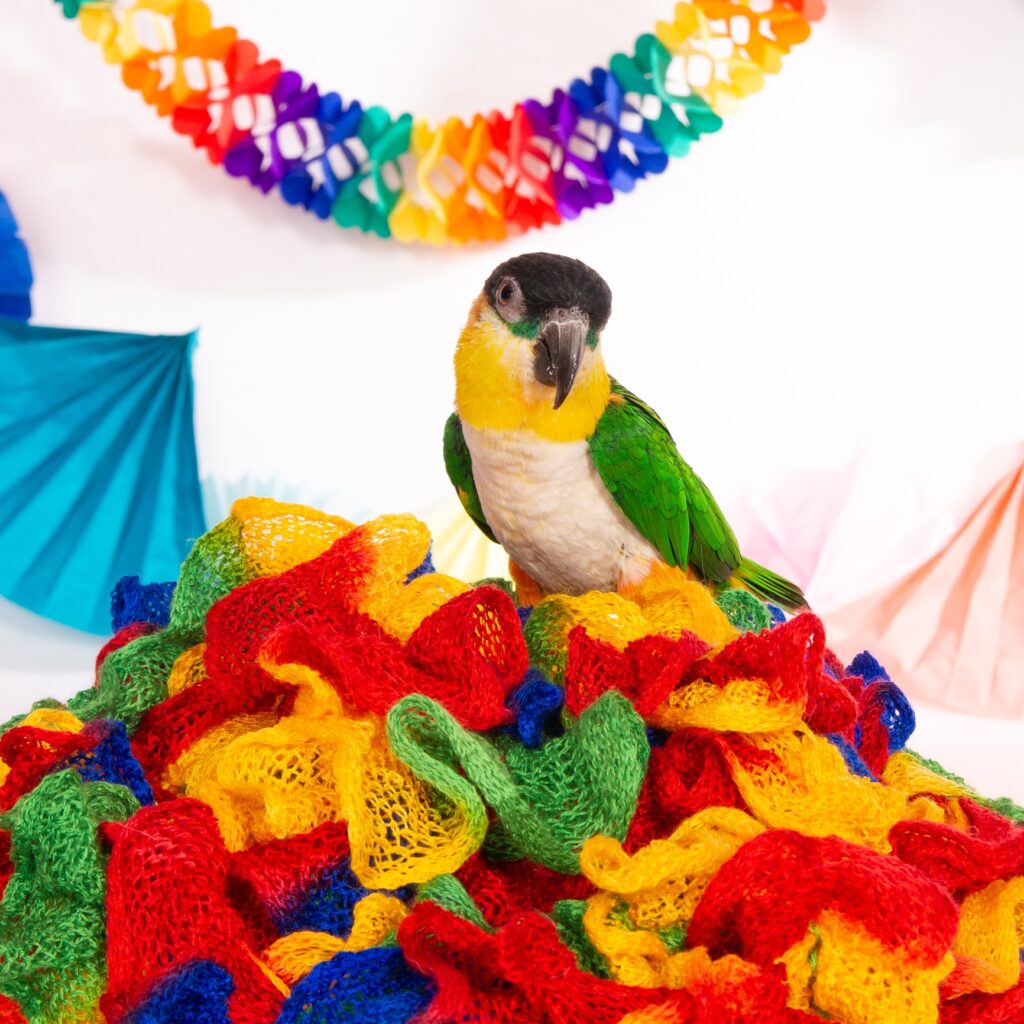
Adopting a Caique Parrot
Because of their lovable nature, caiques can make great pets, and in situations where they end up available for adoption (such as an owner no longer being physically or financially capable of taking care of them, divorce, death, a move, or job transfer), you can easily find a lifelong companion who enjoys your company and is good for a bundle of laughs.
Adopting a caique is a great way to find a companion. You can find many adoption locations, such as parrot sanctuaries like The Gabriel Foundation. You can also use websites like Adopt a Pet to search for the specific animal you want in your area.
Final Thoughts
Caique parrots are friendly, outgoing birds wanting fun and bonding with their owners. If you’re looking for a companion that stays within 10 inches long and can live up to 30 years, a caique might be a fun fit for you. Check out our website for more details about other parrots or give us a squawk!


